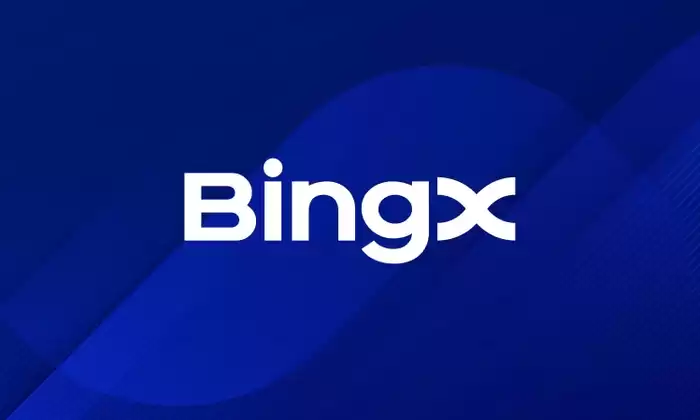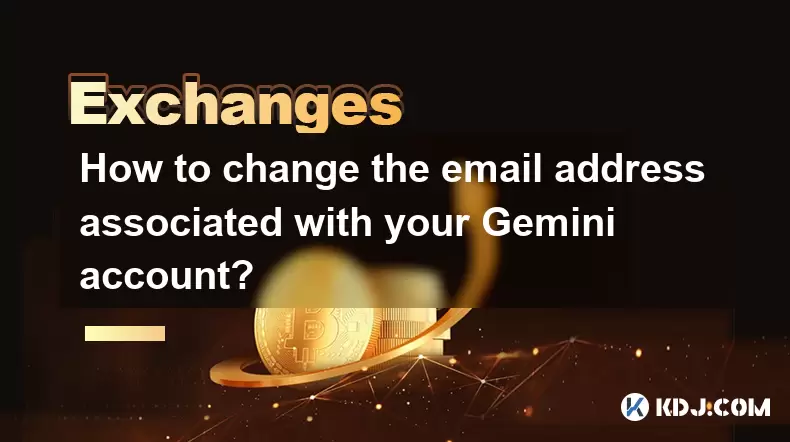-
 Bitcoin
Bitcoin $114200
0.00% -
 Ethereum
Ethereum $3637
0.56% -
 XRP
XRP $2.950
-2.01% -
 Tether USDt
Tether USDt $0.9999
0.02% -
 BNB
BNB $761.0
0.55% -
 Solana
Solana $164.1
-1.38% -
 USDC
USDC $0.9999
0.02% -
 TRON
TRON $0.3332
0.36% -
 Dogecoin
Dogecoin $0.2012
-0.52% -
 Cardano
Cardano $0.7261
-1.41% -
 Hyperliquid
Hyperliquid $37.62
-2.13% -
 Stellar
Stellar $0.3930
-2.65% -
 Sui
Sui $3.441
-0.16% -
 Bitcoin Cash
Bitcoin Cash $563.8
0.70% -
 Chainlink
Chainlink $16.50
0.09% -
 Hedera
Hedera $0.2424
-0.14% -
 Ethena USDe
Ethena USDe $1.001
0.01% -
 Avalanche
Avalanche $22.20
0.00% -
 Litecoin
Litecoin $118.0
-2.48% -
 UNUS SED LEO
UNUS SED LEO $8.991
0.12% -
 Toncoin
Toncoin $3.195
-3.87% -
 Shiba Inu
Shiba Inu $0.00001217
0.12% -
 Uniswap
Uniswap $9.674
-0.21% -
 Polkadot
Polkadot $3.633
1.00% -
 Monero
Monero $295.3
-0.82% -
 Dai
Dai $0.9999
0.00% -
 Bitget Token
Bitget Token $4.321
-0.41% -
 Cronos
Cronos $0.1392
0.73% -
 Pepe
Pepe $0.00001027
-0.89% -
 Aave
Aave $258.5
0.32%
How to trade with leverage on BingX
Leverage trading on BingX allows traders to amplify their profits and losses, but prudent risk management is crucial to navigate the inherent risks.
Nov 28, 2024 at 02:35 pm

Step 1: Understanding Leverage Trading
Leverage trading is a technique employed in trading that amplifies the potential profit or loss by utilizing borrowed funds. It essentially allows traders to control a larger trading volume with a smaller initial investment. Platforms like BingX offer leverage on various trading instruments, primarily for perpetual futures contracts. The mechanism works by providing traders with the option to leverage their capital by a certain factor, which can range from 1x to 100x. It's worth noting that while leverage trading can multiply profits, it also exacerbates losses. Prudent risk management and a thorough understanding of the risks are crucial before engaging in leverage trading.
Step 2: Access to Leverage Trading on BingX
BingX features a user-friendly interface that simplifies the process of enabling leverage trading for perpetual futures. Traders can follow these steps to activate it:
a. Log in to your BingX account.
b. Select the "Futures" tab from the top navigation bar.
c. Choose the desired trading pair, such as BTC/USDT or ETH/USDT.
d. Click on the "Trade" button associated with the chosen pair.
e. The trading interface will display various settings, including the "Leverage" option.
f. Select the desired leverage amount based on your risk tolerance and trading strategy.
g. Once the leverage is set, traders can proceed to place their orders.
Step 3: Executing Leveraged Trades
Placing a leveraged trade on BingX is similar to regular futures trading, with the primary distinction being the leverage factor applied. Traders can follow these steps to execute a leveraged trade:
a. After setting up the desired leverage, click on the "Buy/Long" or "Sell/Short" button to enter the desired position.
b. Input the quantity of the contract you want to buy or sell in the "Amount" field.
c. Click on the "Place Order" button to execute the trade.
Step 4: Monitoring and Managing Leverage Positions
Active monitoring of leverage positions is essential for effective risk management. BingX provides real-time updates on the status of open positions. Traders should constantly observe the following key elements:
a. Position Margin: This reflects the amount of funds allocated as margin for the leveraged position.
b. Unrealized P/L: This shows the current profit or loss, realized on paper, for the open leveraged position marked against the entry price.
c. Maintenance Margin Ratio: This ratio indicates the minimum margin required to maintain the leveraged position open. It is expressed as a percentage. Traders should ensure that this ratio does not fall below the maintenance margin level to avoid liquidation.
Step 5: Closing Leverage Positions
Closing a leveraged position involves exiting the trade. Traders can do this by placing an order in the opposite direction of the initial position. For example, if you have a long position, you would close it by placing a sell order of the same quantity. Once the closing order is executed, the leveraged position will be closed, and any profit or loss will be realized. It is essential to remember that leverage trading amplifies both profits and losses, and traders should close positions promptly to limit potential losses.
Disclaimer:info@kdj.com
The information provided is not trading advice. kdj.com does not assume any responsibility for any investments made based on the information provided in this article. Cryptocurrencies are highly volatile and it is highly recommended that you invest with caution after thorough research!
If you believe that the content used on this website infringes your copyright, please contact us immediately (info@kdj.com) and we will delete it promptly.
- Ethereum, Transaction Volumes, and SEC Staking: Navigating the Regulatory Landscape
- 2025-08-06 22:30:13
- Crypto, Tokens, and Metrics: Navigating the New Frontier
- 2025-08-06 23:09:22
- Crypto Market Buzz: PROVE Surges as Coinbase, Binance List Token
- 2025-08-06 22:30:13
- BlockDAG, Crypto, and Binance Coin: The Hottest Trends You Can't Ignore
- 2025-08-06 23:50:13
- BlockSack Who? Base Network and Layer 2s Shake Up the Crypto Scene
- 2025-08-06 23:10:13
- DOGE, SHIB, and Remittix ROI: Shifting Sands in the Crypto Landscape
- 2025-08-06 23:50:13
Related knowledge

How to set and manage alerts on the Gemini app?
Aug 03,2025 at 11:00am
Understanding the Gemini App Alert SystemThe Gemini app offers users a powerful way to stay informed about their cryptocurrency holdings, price moveme...

How to use the Gemini mobile app to trade on the go?
Aug 04,2025 at 09:14am
Setting Up the Gemini Mobile AppTo begin trading on the go using the Gemini mobile app, the first step is installing the application on your smartphon...

How to set up a corporate account on Gemini?
Aug 05,2025 at 03:29pm
Understanding Gemini Corporate AccountsGemini is a regulated cryptocurrency exchange platform that supports both individual and corporate account crea...

How to change the email address associated with your Gemini account?
Aug 06,2025 at 08:49pm
Understanding the Importance of Updating Your Email on GeminiYour email address serves as a primary identifier and communication channel for your Gemi...

What to do if you forgot your Gemini password?
Aug 04,2025 at 03:42am
Understanding the Role of Passwords in Gemini AccountsWhen using Gemini, a regulated cryptocurrency exchange platform, your password serves as one of ...

What are the websocket feeds available from the Gemini API?
Aug 03,2025 at 07:43pm
Overview of Gemini WebSocket FeedsThe Gemini API provides real-time market data through its WebSocket feeds, enabling developers and traders to receiv...

How to set and manage alerts on the Gemini app?
Aug 03,2025 at 11:00am
Understanding the Gemini App Alert SystemThe Gemini app offers users a powerful way to stay informed about their cryptocurrency holdings, price moveme...

How to use the Gemini mobile app to trade on the go?
Aug 04,2025 at 09:14am
Setting Up the Gemini Mobile AppTo begin trading on the go using the Gemini mobile app, the first step is installing the application on your smartphon...

How to set up a corporate account on Gemini?
Aug 05,2025 at 03:29pm
Understanding Gemini Corporate AccountsGemini is a regulated cryptocurrency exchange platform that supports both individual and corporate account crea...

How to change the email address associated with your Gemini account?
Aug 06,2025 at 08:49pm
Understanding the Importance of Updating Your Email on GeminiYour email address serves as a primary identifier and communication channel for your Gemi...

What to do if you forgot your Gemini password?
Aug 04,2025 at 03:42am
Understanding the Role of Passwords in Gemini AccountsWhen using Gemini, a regulated cryptocurrency exchange platform, your password serves as one of ...

What are the websocket feeds available from the Gemini API?
Aug 03,2025 at 07:43pm
Overview of Gemini WebSocket FeedsThe Gemini API provides real-time market data through its WebSocket feeds, enabling developers and traders to receiv...
See all articles

























































































